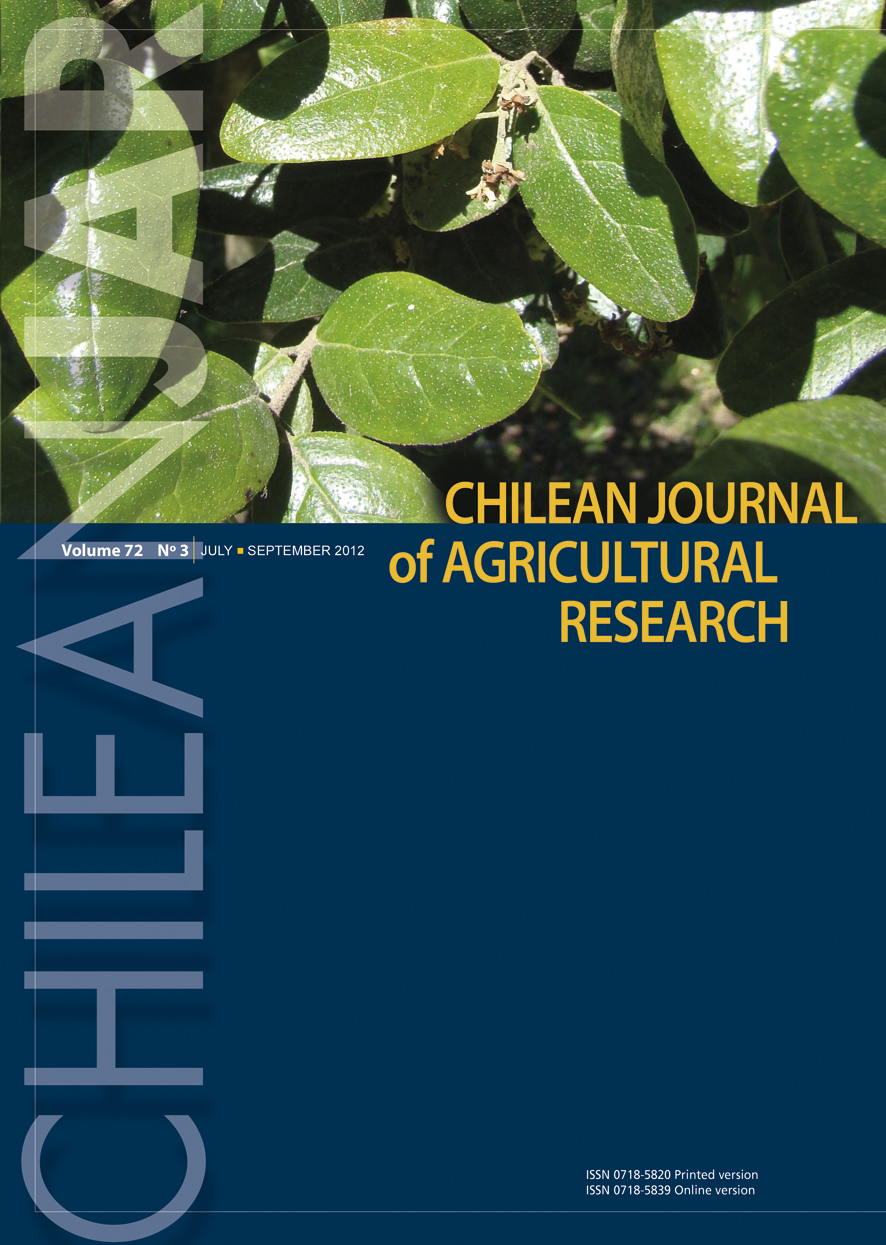
|
Chilean Journal of Agricultural Research
Instituto de Investigaciones Agropecuarias, INIA
ISSN: 0718-5820
EISSN: 0718-5820
Vol. 70, No. 4, 2010, pp. 523-536
|
 Bioline Code: cj10058
Bioline Code: cj10058
Full paper language: English
Document type: Research Article
Document available free of charge
|
|
|
Chilean Journal of Agricultural Research, Vol. 70, No. 4, 2010, pp. 523-536
| en |
Determination Of Antioxidant Capacity, Total Phenolic Content And Mineral Composition Of Different Fruit Tissue Of Five Apple Cultivars Grown In Chile
Henríquez, Carolina; Almonacid, Sergio; Chiffelle, Italo; Valenzuela, Tania; Araya, Manuel; Cabezas, Lorena; Simpson, Ricardo & Speisky, Hernán
Abstract
Apples (Malus domestica Borkh.) have been identified as one of the main dietary sources of antioxidants, mainly phenolic compounds. These compounds vary in their composition and concentration, among cultivars and fruit tissues. In this research, the total phenolic content (Folin-Ciocalteau assay), antioxidant capacity (Ferric Reducing Antioxidant Power, FRAP assay) and mineral composition in three fruit tissues (peel, pulp and whole fruit), of apple cultivars commonly used for dried apple production in Chile, were studied. In addition, the physical-chemical characteristics (dry weight, pH, titratable acidity, soluble solids content and color) were also evaluated. The results indicated that the total phenolic content, the antioxidant capacity, and the mineral composition, of peel were substantially higher than those of whole fruit, and pulp for all the cultivars studied. Among cultivars, 'Red Delicious' apple peels have a significantly much higher content of total phenolic (11.6 mg gallic acid equivalents [GAE] g-1 FW) and a higher FRAP (209.9 µmol Fe+2 g-1 FW). Additionally, a high correlation between total phenolic content and antioxidant capacity was found in all the cultivars and fruit tissues analyzed, except in the apple pulp. On the other hand, the physical and chemical composition differed among cultivars and fruit tissues. In conclusion, our results demonstrated that the total phenolic content, antioxidant capacity, mineral composition, and physical and chemical characteristics vary considerably depending on the apple cultivars and fruit tissues analyzed.
Keywords
Folin-Ciocalteau assay, FRAP antioxidant capacity, physical-chemical parameters.
|
| |
| es |
Determinación de la capacidad antioxidante, contenido de fenoles totales y composición mineral de diferentes tejidos de frutos de cinco variedades de manzana cultivadas en Chile.
Henríquez, Carolina; Almonacid, Sergio; Chiffelle, Italo; Valenzuela, Tania; Araya, Manuel; Cabezas, Lorena; Simpson, Ricardo & Speisky, Hernán
Resumen
Las manzanas (Malus domesticacious presentó significativamente mayor contenido de fenoles totales (11,6 mg equivalentes ácido gálico [EAG] g-1 PF) y mayor valor FRAP (209,9 µmol Fe+2 g-1 PF). Adicionalmente, se encontró una alta correlación entre el contenido de fenoles totales y la capacidad antioxidante en todas las variedades y los tejidos del fruto analizados, excepto en la pulpa. Por otro lado, la composición física y química varió. En conclusión, el contenido de fenoles totales, la capacidad antioxidante, la composición mineral, y las características físicas y químicas varían considerablemente, dependiendo de la variedad de manzana y el tejido del fruto analizado.
Palabras-clave
ensayo Folin-Ciocalteau, capacidad antioxidante FRAP, parámetros físico-químicos.
|
| |
© Copyright 2010 Chilean Journal of Agricultural Research.
Alternative site location: http://www.inia.cl
|
|
